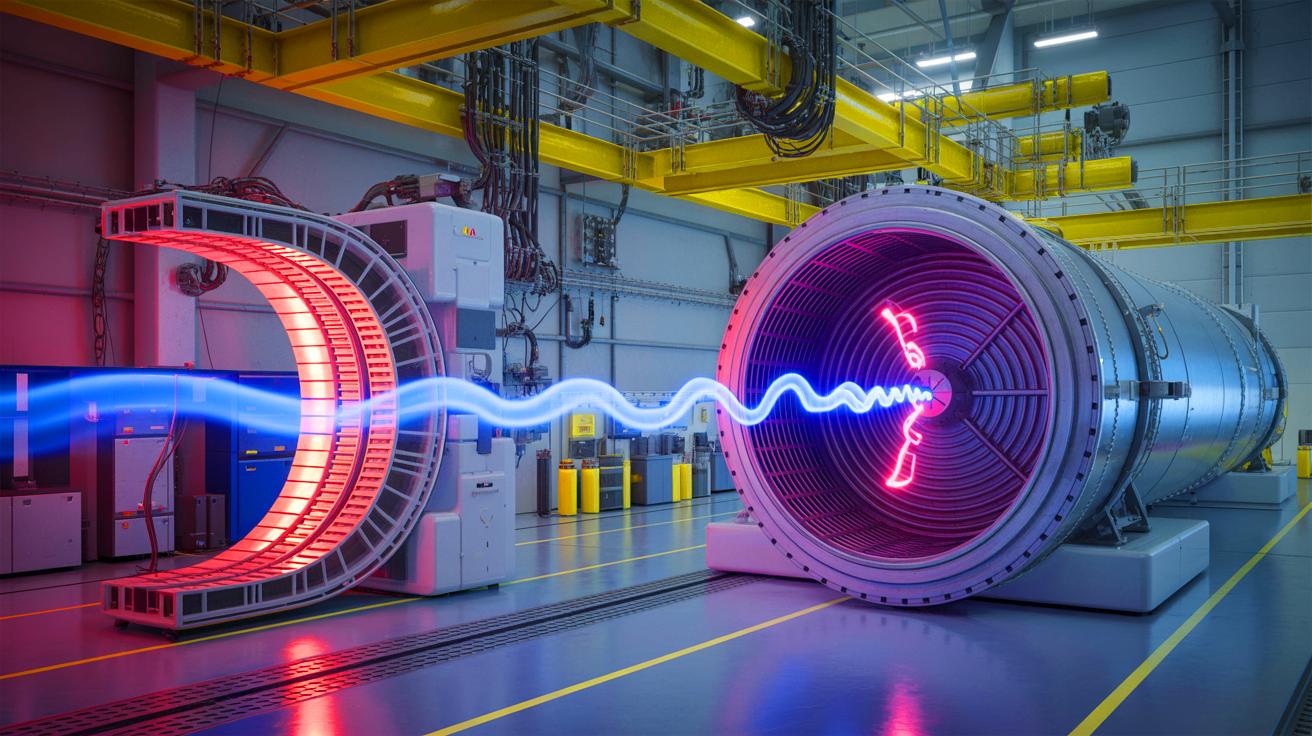| IN A NUTSHELL |
|
The pursuit of sustainable energy is a global challenge, and the United Kingdom is making strides with its pioneering work in fusion technology. At the heart of this effort is the Mega Ampere Spherical Tokamak (MAST) Upgrade, a cutting-edge fusion experiment set to revolutionize how we approach plasma heating. This endeavor aims to harness the power of the stars, providing a clean and virtually limitless energy source. The recent shipment of critical components from General Atomics marks a significant milestone in this ambitious project.
The Role of Corrugated Waveguide Components
The delivery of corrugated waveguide components to the United Kingdom Atomic Energy Authority (UKAEA) signifies not just a technological advancement but a leap toward practical fusion energy. These components, developed by General Atomics, are integral to the MAST Upgrade, serving as conduits for high-power radiofrequency waves. These carefully engineered metallic tubes with ridged inner surfaces are essential for directing electromagnetic waves to boost and control charged particles within the plasma. This process is vital for achieving the superheated state of matter necessary for nuclear fusion.
General Atomics’ collaboration with UKAEA underscores a longstanding partnership rooted in innovation and expertise. The successful delivery of these components not only highlights the capabilities of General Atomics in producing advanced fusion materials but also sets the stage for future collaborations. According to Wayne Solomon, vice president of Magnetic Fusion Energy for General Atomics, this project exemplifies their commitment to delivering top-tier fusion technology worldwide.
Evaluating the Efficiency of EBW Technique
The MAST Upgrade’s primary objective is to evaluate the efficiency of the Electron Bernstein Wave (EBW) heating technique. This novel method utilizes electromagnetic waves to enhance and guide charged particles within the plasma, aiming to improve plasma heating methods for future fusion power plants. The successful implementation of this technique could significantly advance our understanding and application of fusion energy.
The corrugated waveguides play a crucial role in this process by enabling efficient energy transfer from gyrotrons to the plasma. When plasma particles are heated and pressurized under optimal conditions, they begin to fuse, releasing enormous amounts of energy. This process mimics the natural phenomenon that powers the sun, offering a blueprint for sustainable energy production on Earth. The MAST Upgrade’s enhanced capabilities, including longer pulses, increased heating power, and a stronger magnetic field, are pivotal in achieving these goals.
Implications for Future Fusion Power Plants
The significance of the MAST Upgrade extends beyond its immediate objectives, as it represents a key step toward the development of future fusion power plants. By testing and refining the EBW heating technique, researchers aim to reduce the risks associated with high-power microwave systems, paving the way for practical and reliable fusion energy solutions.
“We’re extremely proud of our team’s expertise and innovation,” stated James Anderson, manager of the RF Technology Group for General Atomics. The success of the upcoming tests at MAST Upgrade will be critical in advancing our journey toward harnessing fusion energy. As fusion technology continues to evolve, the insights gained from the MAST Upgrade will inform the design and operation of next-generation fusion reactors, bringing us closer to achieving a sustainable energy future.
The Path Forward for Fusion Energy
The journey toward practical fusion energy is fraught with challenges, but the potential rewards are immense. Fusion energy, replicating the power of the sun, offers a clean, safe, and virtually limitless energy source. To achieve this, researchers must overcome significant technical hurdles, including sustaining the extremely high temperatures required for fusion reactions.
The MAST Upgrade’s advancements in plasma heating techniques and energy transfer mechanisms are critical steps in this direction. As the project progresses, the collaboration between General Atomics and UKAEA will likely continue to yield valuable insights into fusion technology. The progress made through the MAST Upgrade not only demonstrates the feasibility of fusion energy but also inspires optimism for a future where sustainable energy is within our grasp.
The advancements achieved through the MAST Upgrade mark a significant milestone in the quest for sustainable energy. As we look to the future, the question remains: how will these breakthroughs in fusion technology shape our approach to energy production and consumption in the coming decades?
Our author used artificial intelligence to enhance this article.
Did you like it? 4.6/5 (23)


